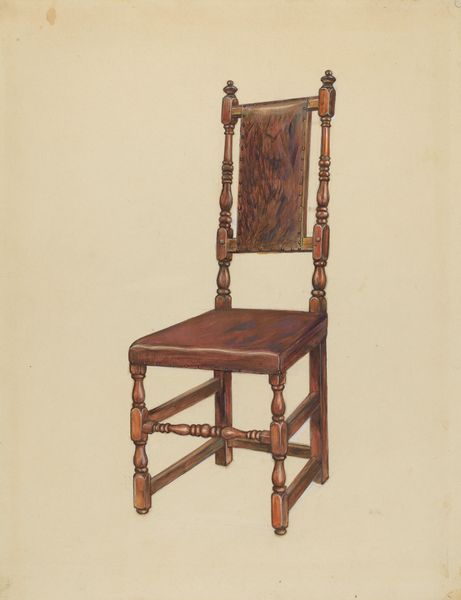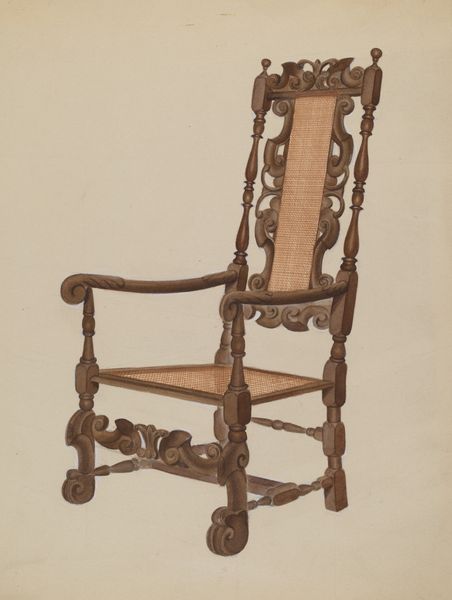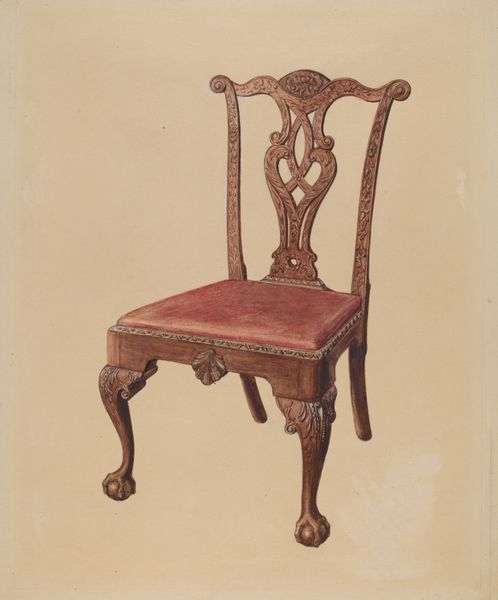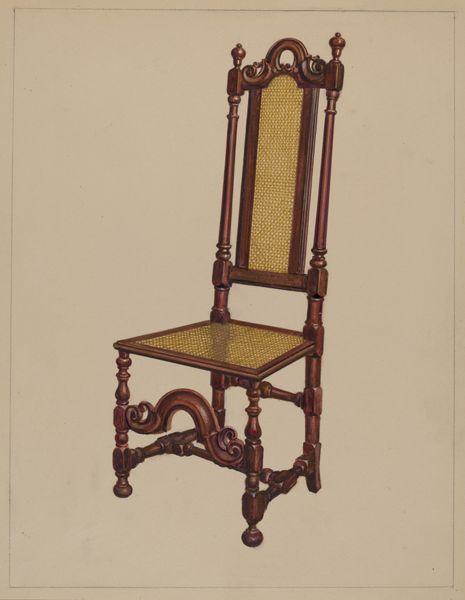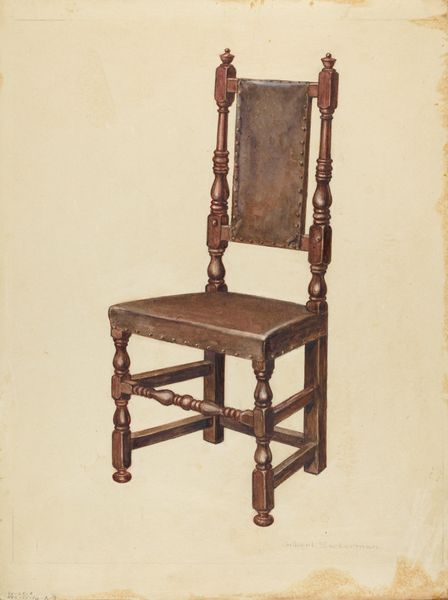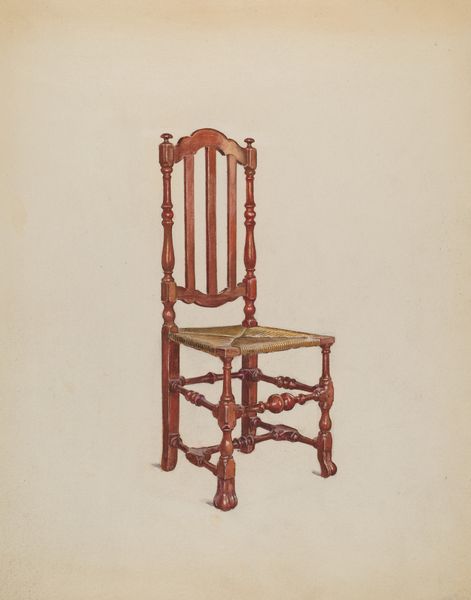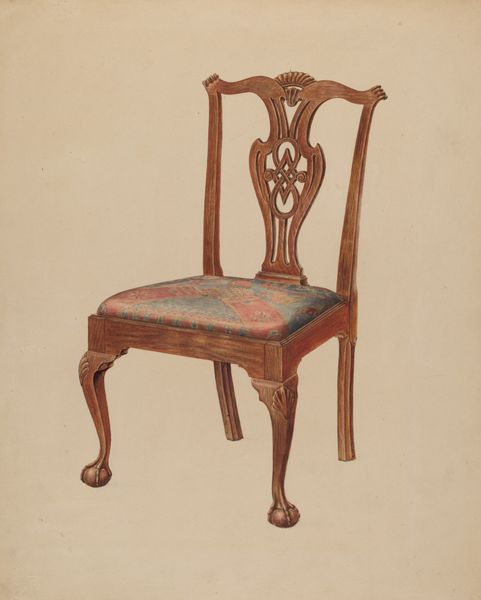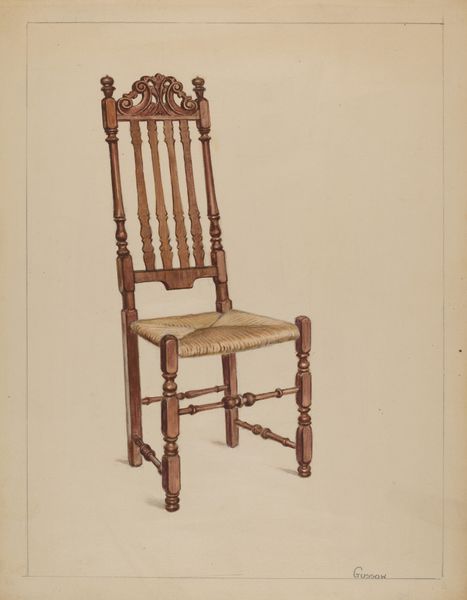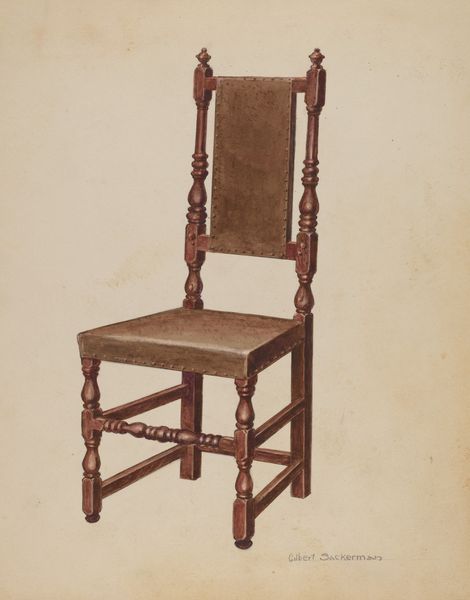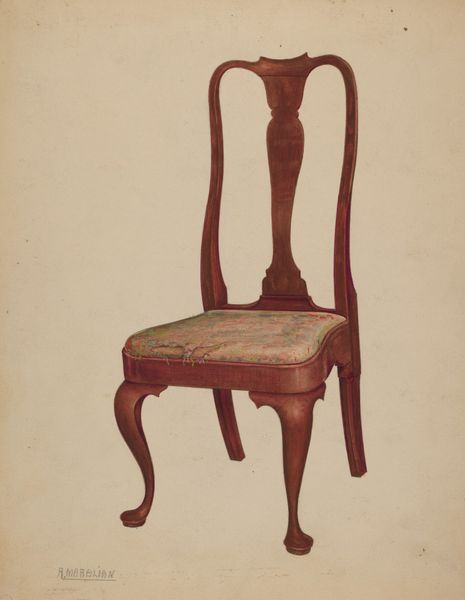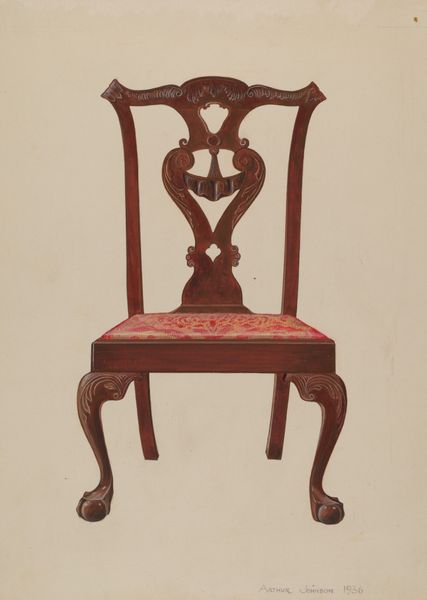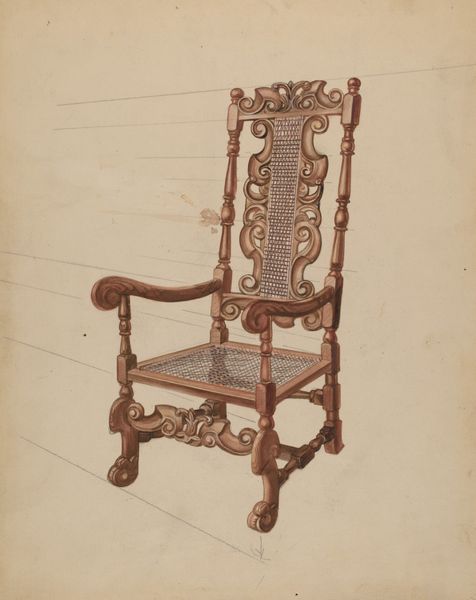
drawing, coloured-pencil, pencil
#
drawing
#
toned paper
#
coloured-pencil
#
charcoal drawing
#
oil painting
#
pencil
#
academic-art
#
charcoal
#
watercolor
Dimensions: overall: 29.5 x 23.9 cm (11 5/8 x 9 7/16 in.) Original IAD Object: none given
Copyright: National Gallery of Art: CC0 1.0
Editor: This drawing from between 1935 and 1942 by William Sanders depicts a Jacobean Chair-table. It's rendered in colored pencil, pencil, and possibly some watercolor. It's quite striking in its detail, almost like a technical illustration, and the wood grain has real presence. What do you see when you look at this piece? Curator: Well, I see more than just a chair, I see a loaded symbol. The chair, an object of domesticity, and the table, of gathering and sustenance. Joined, they become something else, a monument perhaps to adaptable resourcefulness or even a visual pun. Notice how the table-back towers; there’s a verticality that suggests aspiration or even... confinement. Does the dual-purpose design imply something about the era's values of efficiency and multi-tasking, or is there something more to it? Editor: That's interesting! I hadn't considered the potential feeling of confinement. Curator: And the Jacobean style itself harkens back to an era of dramatic social and religious shifts. Doesn't this piece resonate with echoes of tradition and adaptation? Look at how the materials suggest permanence. It brings to mind questions about the function of memory through time, embodied in these specific shapes. What story does this object tell about our collective and personal histories, do you think? Editor: I like your thoughts regarding resourcefulness and its practicality versus possible confinement. Curator: Perhaps it mirrors social hierarchies: one sits above at the table, but also may have been put in their place for breaking societal expectations, symbolically sent to the "corner," which, when "sitting down", also looks like a tall standing object: interesting conundrum about control! What did you learn after observing these iconic symbologies within this chair-table? Editor: Considering the chair and table together gives more complexity to how we relate to this seemingly simple piece of furniture. Thanks for expanding my understanding!
Comments
No comments
Be the first to comment and join the conversation on the ultimate creative platform.
